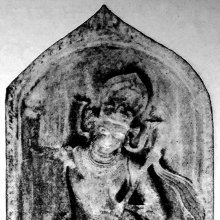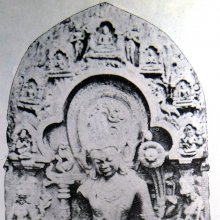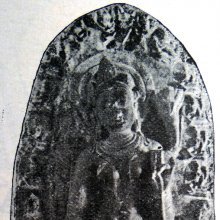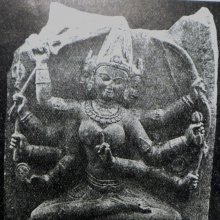Dacca: 2 definitions
Introduction:
Dacca means something in the history of ancient India. If you want to know the exact meaning, history, etymology or English translation of this term then check out the descriptions on this page. Add your comment or reference to a book if you want to contribute to this summary article.
Images (photo gallery)
(+11 more images available)
India history and geography
Source: archive.org: Personal and geographical names in the Gupta inscriptions1) Dacca is the modern name of Ḍavāka According to Fleet. Ḍavāka is a place-name without suffix and is mentioned in the Gupta inscription No. 1. The Gupta empire (r. 3rd-century CE), founded by Śrī Gupta, covered much of ancient India and embraced the Dharmic religions such as Hinduism, Buddhism and Jainism.
2) Dacca is one of the districts that once comprised Samataṭa.—From Samataṭa, the Chinese traveller Hiuen Tsang journeyed towards the West for over 900 li and reached Tanmolihti, or Tāmralipta, the modern Tamluk in the Midnāpur district. Samataṭa, therefore, must have been the South-eastern part of the Bengal presidency corresponding to the Dacca, Faridpur, Backerganj, Jessore and Khulna districts.
Source: Singhi Jain Series: Ratnaprabha-suri’s Kuvalayamala-katha (history)Dacca (दच्च) is classified as one of the eighteen dialects (Deśī) of ancient India, as described in the Kathās (narrative poems) such as Uddyotanasūri in his 8th-century Kuvalayamālā (a Prakrit Campū, similar to Kāvya poetry).—Page 152.24 ff.: Here we have a specimen of eighteen Deśī dialects spoken in: [e.g., Dacca] [...] These different idioms of speech were spoken by the shop-keepers in the market place of Vijayāpurī. [...]

The history of India traces the identification of countries, villages, towns and other regions of India, as well as mythology, zoology, royal dynasties, rulers, tribes, local festivities and traditions and regional languages. Ancient India enjoyed religious freedom and encourages the path of Dharma, a concept common to Buddhism, Hinduism, and Jainism.
See also (Relevant definitions)
Ends with: Odacca.
Full-text (+24): Jamhagira, Samatata, Elakkibale, Svarnagrama, Sugamdhavale, Yalakkibale, Davaka, Dhakka, Adabari, Khulna, Backerganj, Jessore, Faridpur, Rampal, Ciranjiva, Arati, Amshumatphala, Kadalee, Vaaranabusaa, Rambha.
Relevant text
Search found 18 books and stories containing Dacca, Daccā; (plurals include: Daccas, Daccās). You can also click to the full overview containing English textual excerpts. Below are direct links for the most relevant articles:
The Indian Buddhist Iconography (by Benoytosh Bhattachacharyya)
Figure 249 - Dacca image of Khadiravaṇī Tārā
Figure 184-185 - Emanations of Ratnasambhava: Mahāpratisarā
Chaitanya Bhagavata (by Bhumipati Dāsa)
Verse 1.14.23 < [Chapter 14 - The Lord’s Travel to East Bengal and the Disappearance of Lakṣmīpriyā]
Verse 1.2.36-37 < [Chapter 2 - The Lord’s Appearance]
Lord Hayagriva in Sanskrit Literature (by Anindita Adhikari)
Yoginī Tantra < [Chapter 6]
Indian Medicinal Plants (by Kanhoba Ranchoddas Kirtikar)
30. Michelia champaca, Linn. < [Magnoliaceae (magnolia family)]
Later Chola Temples (by S. R. Balasubrahmanyam)
Temples in Melakkadambur < [Chapter II - Temples of Kulottunga I’s Time]
International Affairs: A Survey < [April - June 1973]
Muslim Poets in Modern Bengal < [Aug - Sept 1939]
The Indian Scene < [January - March 1974]





